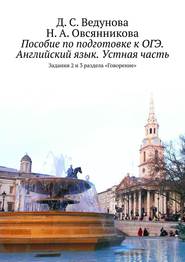По всем вопросам обращайтесь на: info@litportal.ru
(©) 2003-2024.
✖
Explore it. Britain
Настройки чтения
Размер шрифта
Высота строк
Поля
The UK’s largest rivers are the Thames, Severn, Humber, Mersey, Clyde and Forth. They are deep and have artificially straightened bays. The largest seaports and industrial centers are placed there. Sometimes, salt water penetrates the upstream so the majority of the population of sea ports is supplied with drinking water from the underground reservoirs and mountain lakes.
The largest lakes of Great Britain are Loch Tay (about 400 km
) in Northern Ireland, as well as Loch Lomond and Loch Ness in Scotland. The Lake District is very picturesque and attracts many tourists to numerous lakes of Highlands. They are used as transport routes of the local destination. So Loch Ness and Loch Lomond, located in the Great Glen and the combined channel, create a direct water route between the east and the west coast of Scotland. The Lake District has long been the supplier of fresh water for Manchester. In the flat part of the UK a lot of artificial lakes were created.
The main source of high-quality water for the population of low-lying parts of Britain are the underground reservoirs. Currently, underground reservoirs provide 2/5 of all water consumed in England and Wales. In addition to natural waterways significant work to improve access to sea ports a wide network of canals was constructed
Questions on the basis of the material studied:
1. What are the largest lakes of Great Britain?
2. What are the biggest UK Rivers?
Climate of the UK
Now we are going to talk about the climate of the UK. Natural features of the UK in many ways are similar to the neighboring countries of Western Europe. This is not surprising, as the British Isles, are located on the continental shelf, separated from the mainland only in recent geological time. The coastline of the North Sea and the English Channel took shape, similar to a modern, only a few thousand years ago. The facts that the UK is an island and the proximity of the warm North Atlantic Current, a strong segmentation coastline have a certain effect on the nature of this country. This affects in prevalence of moderate temperatures, high humidity, the extraordinary abundance of surface water, the spread of deciduous forests and moorlands. The climate of the British Isles is affected by the closeness of the ocean and especially the Gulf Stream. Traditional English weather is rain and dampness. Winter temperature rarely drops below zero (on average 3—5°C). The most severe weather conditions are in the Highlands of Scotland, Wales and the North of Scotland; in the western part of the UK climate is wetter than in the east because of the prevailing westerly winds from the Atlantic Ocean. The oceanic nature of the UK climate impacts in the prevalence of unstable weather with gusty winds and dense fog throughout the year. The winters are very wet and unusually soft, with a sharp anomaly temperature (about 12—15 degrees) than the average latitudinal values. “The average temperature of the coldest month – January – does not fall below 3.5 degrees, even in the extreme north-east of the UK, and in the southwest it reaches 5.5 degrees. And the plants vegetate there all year round. The masses of warm sea air, coming from the south-west, winter temperatures increase, but at the same time they bring cloudy and rainy weather, with strong winds and storms. When there is the invasion of cold air from the east and north-east frosty weather establishes for a long time. Snow falls in winter throughout the country, but it’s very uneven. In mountainous areas of Scotland the snow cover lasts at least 1—1.5 months. In the south of England, and especially on its south-west snow falls rarely and lasts for no more than a week. Here, the grass is green all year round. In the west of the UK twice as much rainfall falls over the winter than in summer. In the eastern regions winters are colder and less humid. In the spring the blowing of cold northerly winds, significantly delays the growth of crops in the east of Scotland. This time of year is usually the least rainy. Spring in the British Isles is cooler and longer than at the same latitudes in the continent. In Britain, as in other countries with a maritime climate, summers are relatively cool: the average temperature of the warmest month which is July is 1—2 degrees lower than at the same latitudes at the continent. The maximum temperature in the south-east of England sometimes rises above 27 degrees, and sometimes even up to 32 degrees. Maximum precipitation is in the second half of summer. Autumn intensifies cyclonic activity, the weather becomes cloudy and rainy, sometimes with violent storms, especially in September and October.
Вы ознакомились с фрагментом книги.
Приобретайте полный текст книги у нашего партнера:
Приобретайте полный текст книги у нашего партнера:










